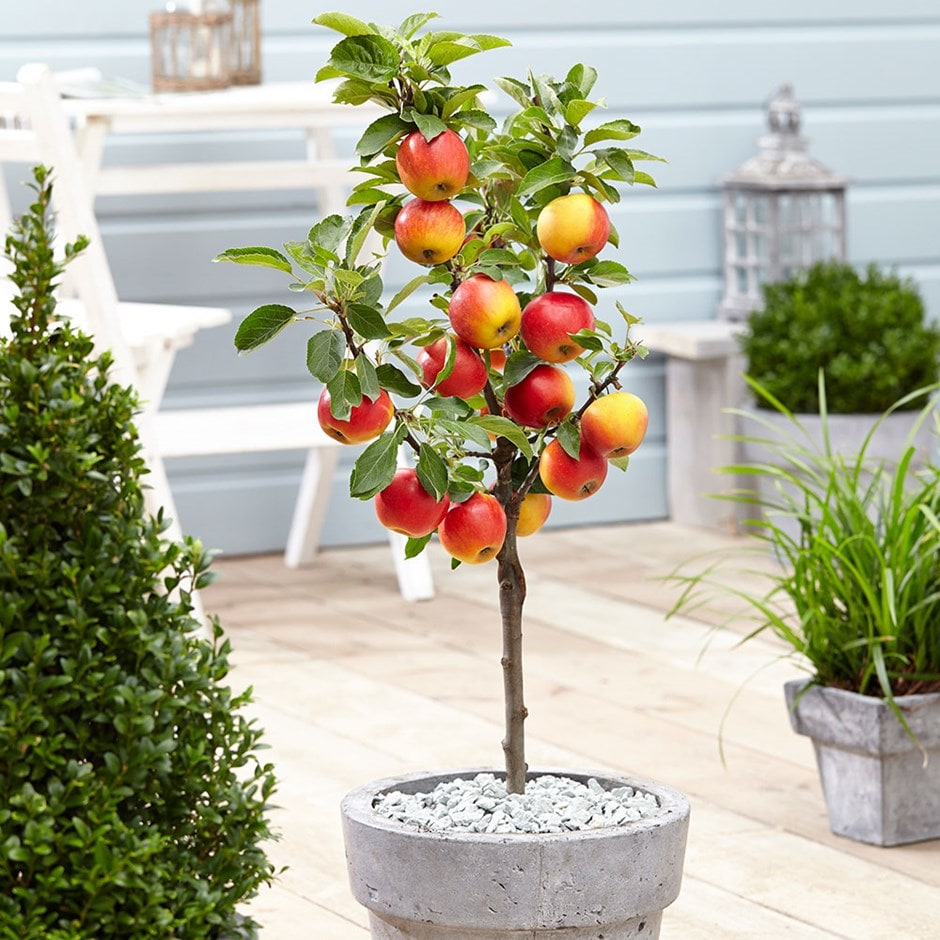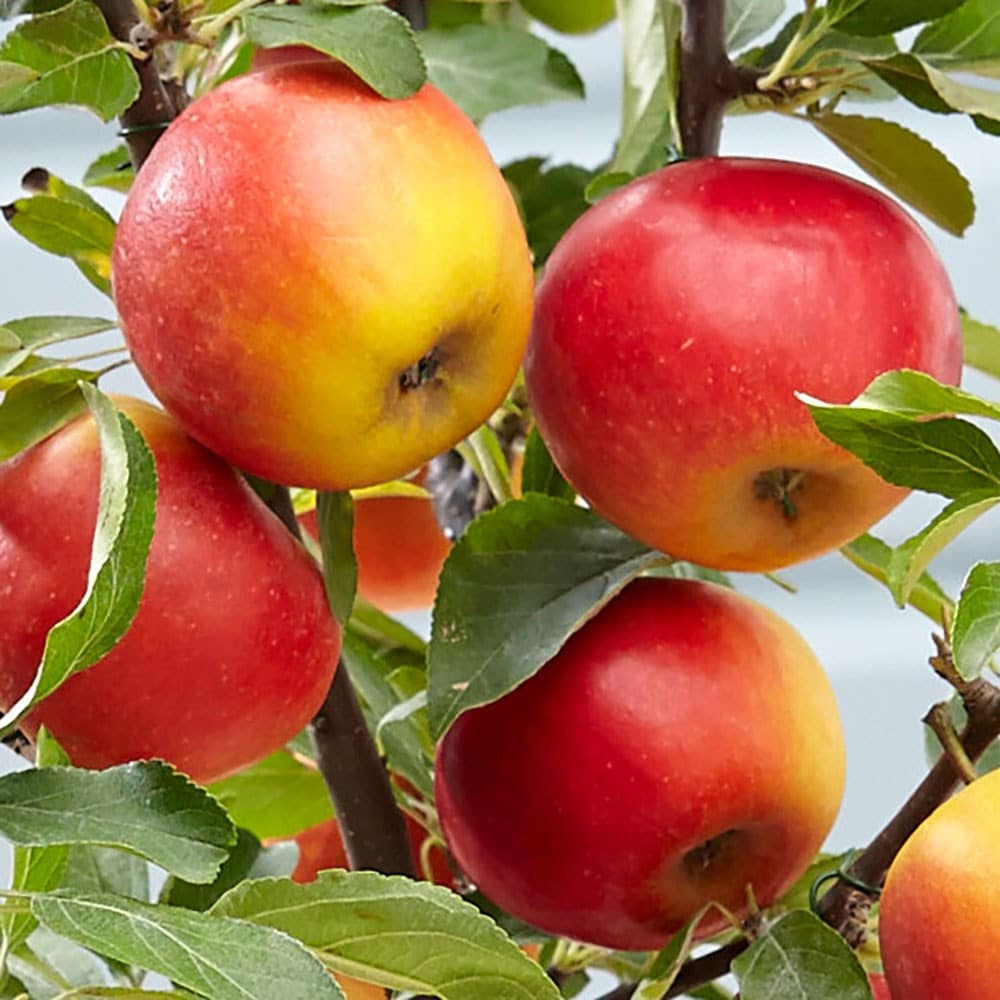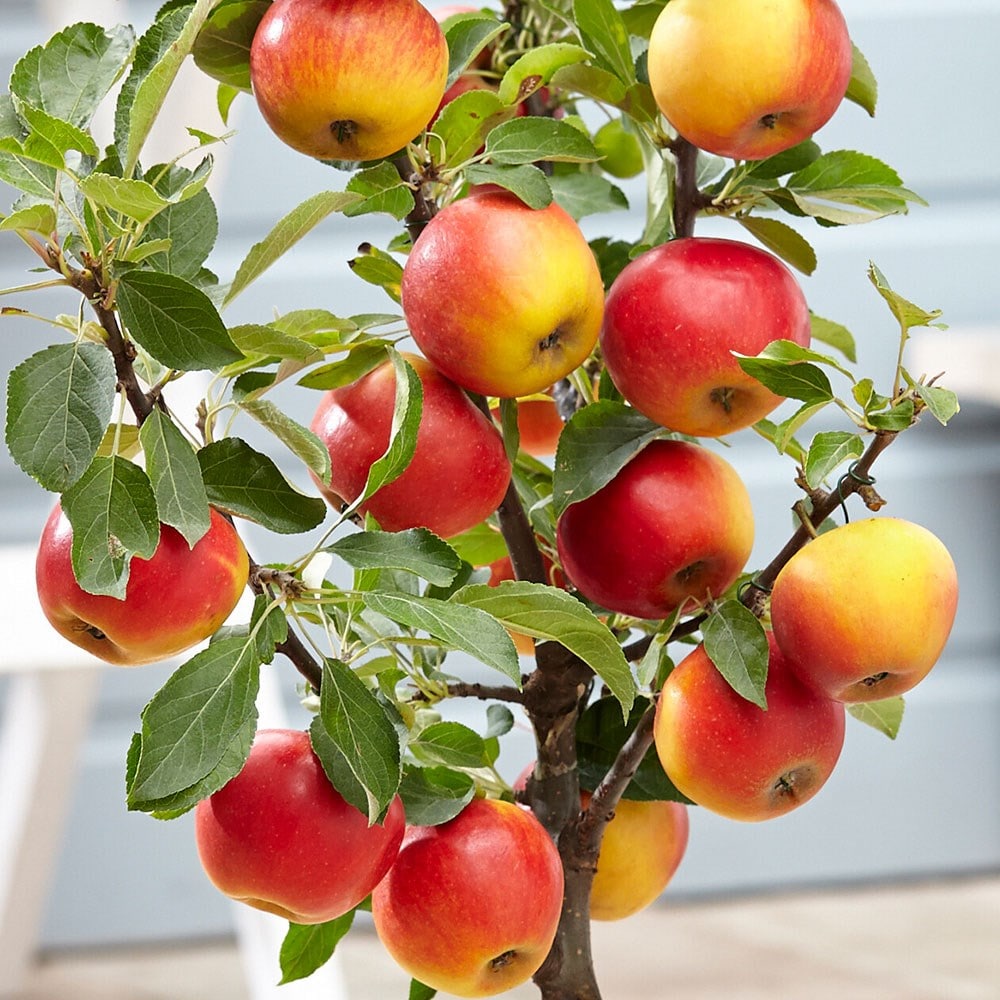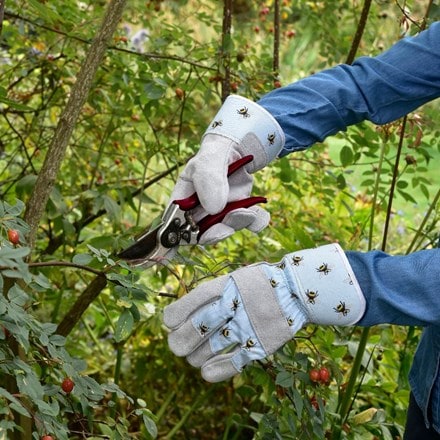apple 'Elstar'
eating / dessert apple
- bare root | M26 root stock | 1.2m
- £34.99
- available to order from autumn 2024
- 9 litre pot | M26 root stock | 1.2m
- £49.99
- In stock (shipped within 3-5 working days)
Delivery options
- Standard £7.95
- Position: full sun
- Soil: moderately fertile, moist but well-drained soil
- Rate of growth: average to fast
- Flowering period: April to May
- Hardiness: fully hardy
An intensely flavoured, honeyed and crisp cultivar that produces heavy, regular crops of apples; greenish-yellow flushed red. A cross between 'Golden Delicious' and 'Ingrid Marie', 'Elstar' is a dessert apple sold as a mini-standard, perfect for pots.
Please note that the pot in the photograph is not supplied with the plant (which is sent out in a simple nursery alternative), but we have a wide and wonderful range on our website to choose from.
Pollination information: This apple belongs to pollination group 3, and is not self fertile, so needs a pollinating partner to produce a crop of apples apples. Cross-pollinate with other apples in this group or those from group or those from groups 2 or 4, such as ‘Braeburn’ or ‘Cox’s Orange Pippin’.
Please note that the pot in the photograph is not supplied with the plant (which is sent out in a simple nursery alternative), but we have a wide and wonderful range on our website to choose from.
Pollination information: This apple belongs to pollination group 3, and is not self fertile, so needs a pollinating partner to produce a crop of apples apples. Cross-pollinate with other apples in this group or those from group or those from groups 2 or 4, such as ‘Braeburn’ or ‘Cox’s Orange Pippin’.
When planting your apple tree, prepare a hole up to three times the diameter of its root system. Fork over the base of the pit in readiness, incorporating plenty of organic matter into the backfill and planting hole. Avoiding frozen and waterlogged soil, trees should be planted out as they arrive. If you've ordered a bare root tree, soak the roots in a bucket of water for half an hour prior to planting - or if this is not possible, they can be heeled in temporarily, covering their roots with soil, or potted up. Once in the ground, stake firmly and keep the base weed-free. Apply a balanced fertiliser in early spring to support growth and fruiting and provide regular watering during hot, dry spells. The main winter prune, avoiding frosty conditions, involves removing dead, dying, and diseased wood to create an open crown. Additionally, reduce leaders and laterals by a third to establish an airy structure without crisscrossing branches. In August, summer prune by shortening side shoots longer than 20cm (8”) back to three leaves, promoting fruit ripening and encouraging more fruit buds.



